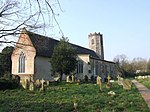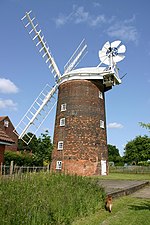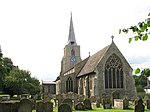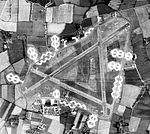New Buckenham

New Buckenham is a village and civil parish in the English county of Norfolk. The parish covers an area of 1.73 km2 (0.67 sq mi) and had a population of 468 in 197 households at the 2001 census, falling marginally to a population of 460 in 209 households at the 2011 census. The small parish includes only the village, New Buckenham Common and some outlying houses and farmland. It is in the local government district of Breckland. A nucleated village, New Buckenham has a medieval grid plan encompassing a green that originally served as the market place. At the green there is a historic market house, a grade II-star listed building which features a whipping post, and commonly called the Market Cross. The village entirely comprises a conservation area together with the adjacent Buckenham Castle, which lies in the neighbouring parish of Old Buckenham.
Excerpt from the Wikipedia article New Buckenham (License: CC BY-SA 3.0, Authors, Images).New Buckenham
Market Place, Breckland District New Buckenham
Geographical coordinates (GPS) Address Nearby Places Show on map
Geographical coordinates (GPS)
| Latitude | Longitude |
|---|---|
| N 52.472 ° | E 1.073 ° |
Address
St Mary's Residential Care Home
Market Place
NR16 2AN Breckland District, New Buckenham
England, United Kingdom
Open on Google Maps







